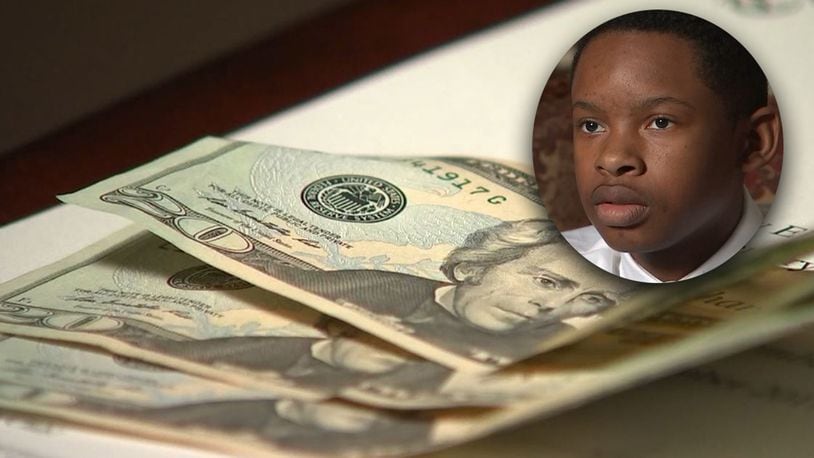Navigate the Web: Purchase copyright Money up for sale from Trusted Vendors
Navigate the Web: Purchase copyright Money up for sale from Trusted Vendors
Blog Article
Check Out the Uses of Imitation Money in Artistic Creations and Theatrical Performances
Phony cash, commonly synonymous with deception and outrage, holds a strange allure when it discovers its means right into the world of theatrical performances and imaginative productions. As we delve into the diverse usages of phony cash in these creative domains, we start to reveal a globe where authenticity and replica blur, motivating us to question the very nature of value and representation within art and performance.

Historical Relevance of Funny Money in Art
The historical significance of funny money in art is a complex and interesting subject that clarifies the intersection of creativity, subversion, and socio-political commentary. Throughout background, musicians have actually made use of funny money as a tool for challenging social standards, questioning the value of currency, and making powerful statements concerning wide range and power.
Among one of the most significant examples of funny money in art go back to the Dada activity of the very early 20th century - copyright money for sale. Artists such as Marcel Duchamp and Hannah Höch included copyright right into their works to criticize the capitalist system and explore the principle of worth in a rapidly altering world
Furthermore, during times of financial instability or political upheaval, funny money has actually been utilized by musicians as a type of protest or disobedience. By developing and distributing phony currency, musicians have had the ability to disrupt the status, challenge authority, and prompt essential discussions about the duty of money in culture.
Impact of Imitation Currency on Visual Arts
By including phony cash into their works, artists provoke discussions on the nature of value, credibility, and societal perceptions of wide range. The usage of phony money in art additionally elevates moral considerations regarding the boundaries of artistic expression and the effects of reproducing lawful tender. Generally, the effect of copyright currency on visual arts is multifaceted, boosting essential representations on the junction of money, art, and societal values.
Symbolism and Definition in Theatrical Imitation Displays
Using theatrical copyright displays, musicians utilize symbolic representations to convey much deeper definitions and evoke thought-provoking analyses within the world of performance art. Through the incorporation of imitation cash in staged productions, developers can discover motifs such as greed, power, corruption, and the illusion of wealth. The usage of copyright on phase can act as an allegory for social concerns, financial differences, and the frailty of financial systems.
In staged efficiencies, the symbolic worth of funny money prolongs past its financial worth. It can signify the misleading nature of looks, the quest of materialistic desires, and the effects of unethical actions. By using phony money as a prop, musicians can challenge target markets to question the real meaning of wide range and the honest borders that individuals might cross in its search.
Honest Factors To Consider in Using Funny Money for Art

One major ethical factor to consider is the potential legal effects of using funny money in art. Counterfeiting currency is illegal in a lot of countries and can cause significant effects for artists that intentionally incorporate imitation bills into their job. copyright money for sale. This not only places the musician at threat yet additionally questions regarding promoting unlawful activities through art
In addition, there is an ethical problem relating to the credibility of the art work itself. Using funny money blurs the line between reality and imitation, potentially tricking visitors and endangering the honesty of the creative item. Artists should consider whether the usage of funny money aligns with their worths and imaginative intents, weighing the prospective effect on their online reputation and credibility.
Future Fads in Imitation Cash Integration
Thinking about the progressing landscape of artistic expression, the incorporation of funny money in creative jobs may witness a change in the direction of innovative and intriguing avenues. As musicians remain to press limits and explore brand-new tools, phony money can progressively be used to test societal norms, examine the value of money, or make powerful declarations concerning wide range and consumerism.
One future fad in funny money combination could be its usage in immersive art installments where audiences additional resources are motivated to interact with the items, blurring the lines between fact and illusion. In addition, improvements in innovation might bring about the development of hyper-realistic phony money that is basically identical from real money, opening possibilities for also more detailed and elaborate art work.
Furthermore, partnerships in between artists and counterfeiters can result in special items that combine conventional imaginative techniques with the craftsmanship of creating fake cash. Nonetheless, ethical considerations bordering the validity and principles of using copyright money in art will remain to be a factor of opinion as these future trends unfold.
Conclusion
To conclude, making uses of imitation money in theatrical performances and artistic creations have a long history and continue to give motivation for artists. From its historical importance to its effect on aesthetic arts and meaning in staged screens, copyright plays a distinct role in the art world. However, my blog ethical considerations must be considered when using funny money for innovative objectives. The assimilation of imitation cash in art is most likely to continue progressing in the future.
Overall, the effect of click to read more copyright money on visual arts is complex, promoting crucial representations on the crossway of cash, art, and societal worths.

In verdict, the uses of fake cash in artistic creations and theatrical efficiencies have a long history and proceed to be a source of motivation for musicians. Honest factors to consider have to be taken into account when utilizing phony money for innovative objectives. The integration of fake cash in art is most likely to continue progressing in the future.
Report this page